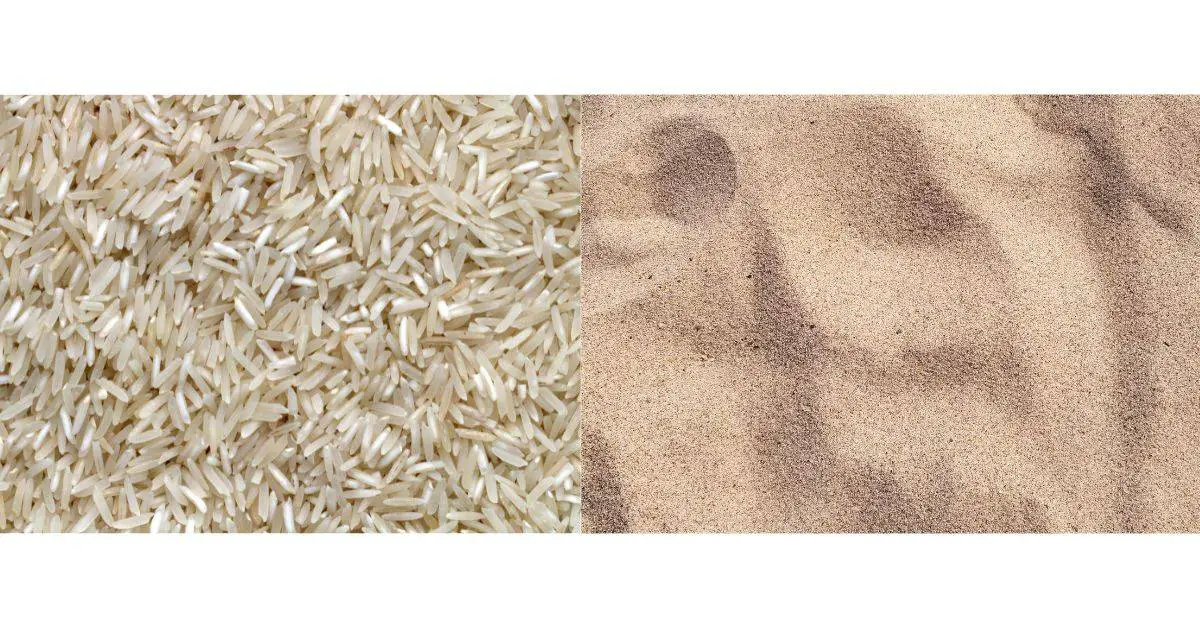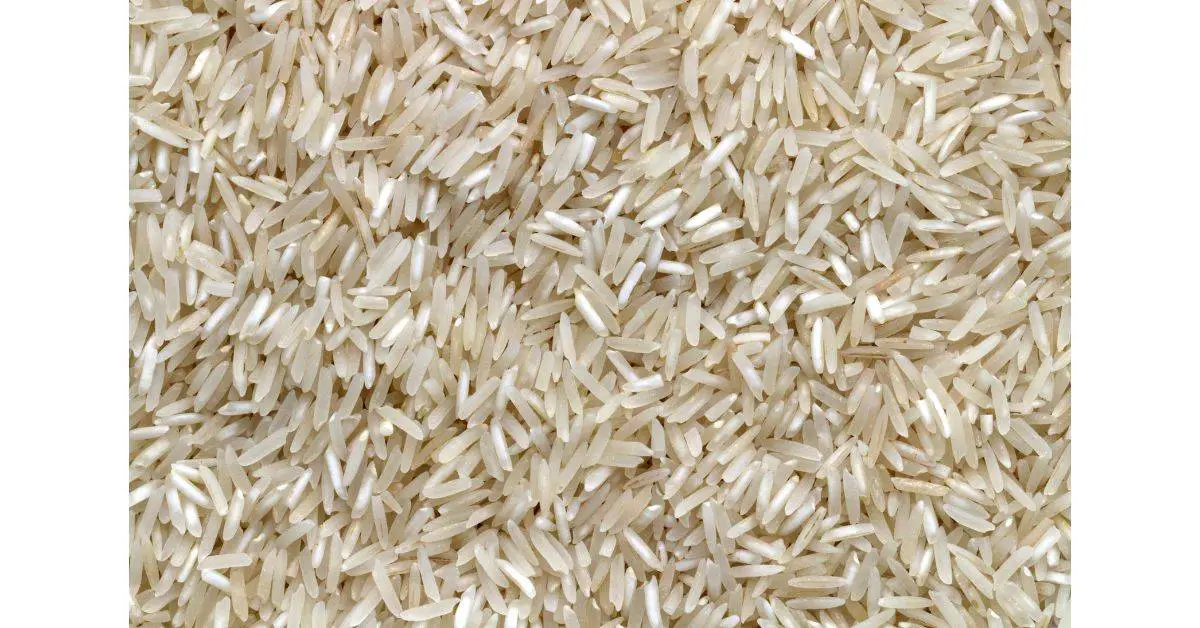Boxing is a sport that requires you to use your hands most of the time. You’re not punching when not using your hands. So, you’ll be using your hands a lot in boxing. That’s why it’s important to condition and strengthen them. You can do that using a rice/sand bucket. Let’s see how.
Boxers use rice or sand bucket exercises to strengthen their hands, forearm, and wrists. Boxers must do that because they’re using their hands when they box. As a result, if their hands or joints are weak, they’ll be more prone to get injured through overtraining. Likewise, strong hands equal more punching power.
You may have seen someone dip their hands in rice or sand and thought, how weird this looks. However, it all makes sense once you understand the many benefits such an exercise can provide.
Nonetheless, you may also wonder how to start conditioning your hands. Well, we’ll discuss the 6 exercises you should perform to prepare your hands with the rice bucket in the second part of this article.
Likewise, having strong hands directly correlate to a higher punching force. That’s why boxers with solid hands can punch harder.
Before diving in, however, if you’re afraid of sparring or boxing in general, follow the link to learn ways to overcome your fear of boxing.
Why do boxers dip their hands in rice?
You might have noticed a strange workout some people perform. First, let’s discuss why conditioning your hands is critical. You use your hands all the time, but most people seem not to pay nearly as much attention to them as they need. As a result, they end up with injured hands, as they inflict too much pressure on this area.
Boxers dip their hands in rice to strengthen their hands, grip strength, wrists, and forearms to improve their boxing ability. Likewise, it can prevent common hand injuries, especially around the wrist and forearm. It will strengthen and condition an area most people skip training and give you an advantage.

Working on that hand strength can also prevent various injuries in the joints and muscles around the hand. You’ll typically see these types of injuries happen in people who participate in sports that involve some grip strength (it can even be wrestling.)
But, if you have solid hands and wrists, you’ll be less likely to injure them in these sports.
This is, of course, also true in boxing. You’ll be using your hands a lot. Likewise, your joints and forearms will experience a high amount of resistance. As a result, you must train them separately to ensure you get a solid level of grip strength.
So, performing the rice bucket exercise can save you plenty of trouble in the future while ensuring you perform better than your competition by being capable of punching harder and having stronger hands.
Should I use sand or rice in my bucket?
The quick answer is that you can use both sand and rice. However, both have various advantages and disadvantages. Thus, it’ll be best to examine them to understand which you should use. This section will discuss whether you should fill your bucket with sand or rice.
Rice is better for the rice bucket exercise because sand is dustier and can be pretty uncomfortable, especially when you’re sweaty. Likewise, rice allows for a more natural, complete motion. On the other hand, getting your hands on a large amount of rice is more expensive than finding sand.

Now, it all looks in favor of rice. Well, that’s only partly true. While it’ll give you more results, you might prefer choosing sand, as it’s easier to attain.
You might not be as eager to spend $15 on white rice to train your hands. So instead, you’ll go somewhere filled with sand and pick up some for your training.
Or, you might even go to the beach to train your hands and enjoy the hot sun. That will be advantageous for some.
However, you might not need to replace your rice often if you get a 5-gallon bucket to fill your 15 pounds of rice or sand while closing it with a lid. The lid will ensure no external factors, such as wildlife or dust, will ruin your training.
Now that we understand why boxers dip their hands in rice let’s go over 6 exercises you can perform if you have access to a rice or sand bucket.
Rice/sand bucket exercises
The following section will examine 6 exercises you can perform with the rice or sand bucket to strengthen your hands.
First, get about 15 pounds of rice or sand. We’ll discuss which one you should choose at the end of this article. So, stick around for that.
Put all the rice you got (it should be worth around $15 of cheap, white rice) into a 5-gallon bucket. This should hold on for numerous workouts, but make sure you have a lid to close the bucket (so no animal accidentally finds it and has breakfast.)
The deeper you get into the bucket, the more resistance the motion will have. Thus, you can dig deep into the bucket for a more intense workout. Likewise, you can be closer to the lid to have less resistance.
Your wrist should stay neutral while performing all these exercises. Likewise, it’ll be better if your shoulder stays straight and loose. Finally, please don’t use it to perform the movement when your forearm, wrist, or hand is tired.
The same applies to the elbow. It’ll help if you don’t use it in the following exercises.
#1 – Inward grip flexing
The first exercise is inward grip flexing. Now, that sounds like a fancy exercise. So let me simplify it for you.
- Dig deep into the rice bucket
- Find a spot in the bucket with enough resistance
- Open your hand and with your fingers spread
- Close your hand (inward motion)
- Flex the muscle for 2-5 seconds
- Pull your hand out
- Repeat with an open hand
That’s inward grip flexing. You dig into the bucket with an open hand and find a suitable place with enough resistance. You can get closer to the bottom to ensure the exercise is more challenging if that feels comfortable.
Then, close your hand and flex the forearm. You should feel it burn after about 3 repetitions, especially if you dug in deep.
Once you flex your hand for a few seconds, pull it out. Now, repeat the same motion for about 10 repetitions for each hand. You can use both hands to save time.
#2 – Outward grip flexing
The second exercise we’ll examine is outward grip flexing. Again, we mustn’t leave out any part in our hands. Furthermore, training both sides will be critical to strengthening your hands as one unit.
Thus, outward grip flexing is what you should do after you perform the inward grip flexing. You can even do them together, one following another.
So, dip your hands and make the inward grip flexing motion. Then, pull your hand out and continue with the outward grip flexing. Repeat until you feel the pump in your forearm and hand.
- Close your hands
- Dig deep into the rice bucket
- Find a spot in the bucket with enough resistance
- Open your hand (outward motion)
- Flex the muscle for 2-5 seconds
- Pull your hand out
- Repeat with a closed hand
#3 – Outward fingers flex
The third exercise using the rice bucket is the outward fingers flex. It works on the same concept as the outward grip flex. Let’s see how you perform it:
- Close your hand
- Dip your hand in the rice bucket
- Find a spot with enough resistance
- Spread your fingers
- Flex for 2-5 seconds
- Pull your hand out
- Repeat
This works another part of your hand and forearm. Likewise, it works the wrist. So, you must perform it in addition to performing the previous ones.
You can keep your hands inside the bucket after you have performed the exercise or take it out and dip it again. There’s no wrong way.
#4 – Inward fingers flex
The inward fingers flex in the opposite motion of the outward fingers flex. Therefore, you must perform both motions to ensure you work both sides of the forearm.
Performing this exercise for enough time will make you regret buying a bucket, as you’ll feel the burn in your hand and forearm. But, likewise, it also conditions your wrist and strengthens your grip power.
Boxers will benefit from performing the inward fingers flex. However, almost anyone can and should condition his hands. Construction workers, for instance, can benefit from having strong hands, which will not be as prone to injuries as the hands of their peers.
- Open your hand with your fingers spread
- Dip your hand in the rice bucket
- Find a spot with enough resistance
- Close your fingers
- Flex for 2-5 seconds
- Pull your hand out
- Repeat
#5 – Counterclockwise wrist twist
The counterclockwise wrist twist is the fifth exercise you can perform with the rice or sand bucket. It allows you to condition your wrist to prevent future injuries.
Boxing will load high-pressure levels on your wrist. You’ll be feeling your wrist working after every punch you throw. So, imagine how you would feel after throwing 200 powerful punches. Causing damage after 200 punches isn’t far-fetched.
Injuries to the hand and wrist most frequently occur from improper punching or striking technique.
SOURCE
That’s why you must protect your wrists at all costs, especially if you’re a boxer. This is where the counterclockwise and clockwise wrist twists come into play.
- Make a fist
- Dip your hand in the rice
- Find suitable resistance
- Twist your wrist counterclockwise for at least 10 seconds
- Pull your hand out
- Repeat
You can either keep your hands inside the bucket when you perform the motion or take it out and dip it again. Both are suitable.
#6 – Clockwise wrist twist
The last exercise we’ll discuss is the opposite of the counterclockwise wrist twist. Or, as you can guess, the clockwise wrist twist.
This exercise completes your wrist conditioning. The rice or sand bucket will allow you to use resistance to ensure your wrist is strong and ready to take a few hits.
The more you strengthen your wrists, the less likely you will injure them. You must still wear hand wraps and boxing gloves, of course. However, you can feel safer when you’re performing the wrist twist.
- Make a fist
- Dip your hand in the rice
- Find suitable resistance
- Twist your wrist clockwise for at least 10 seconds
- Pull your hand out
- Repeat
Final words
Most people, particularly inexperienced boxers, give up training their hands. This can quickly lead to hand and wrist injuries, as you haven’t strengthened them enough.
Likewise, strengthening your hands will increase your punching power and, thus, boxing ability. That’s why using the rice bucket exercise—can help you tremendously in your boxing journey.
You can use sand and rice, although it’ll be better if you use rice. Get 15 lbs of the cheapest white rice you can possibly find and put it in a 5-gallon bucket. Then, perform the six exercises in this article to ensure you work your hands properly.
You’ll also enjoy reading about exercises to strengthen your legs in boxing, which are the driving force behind your punches. Do give it a read!

